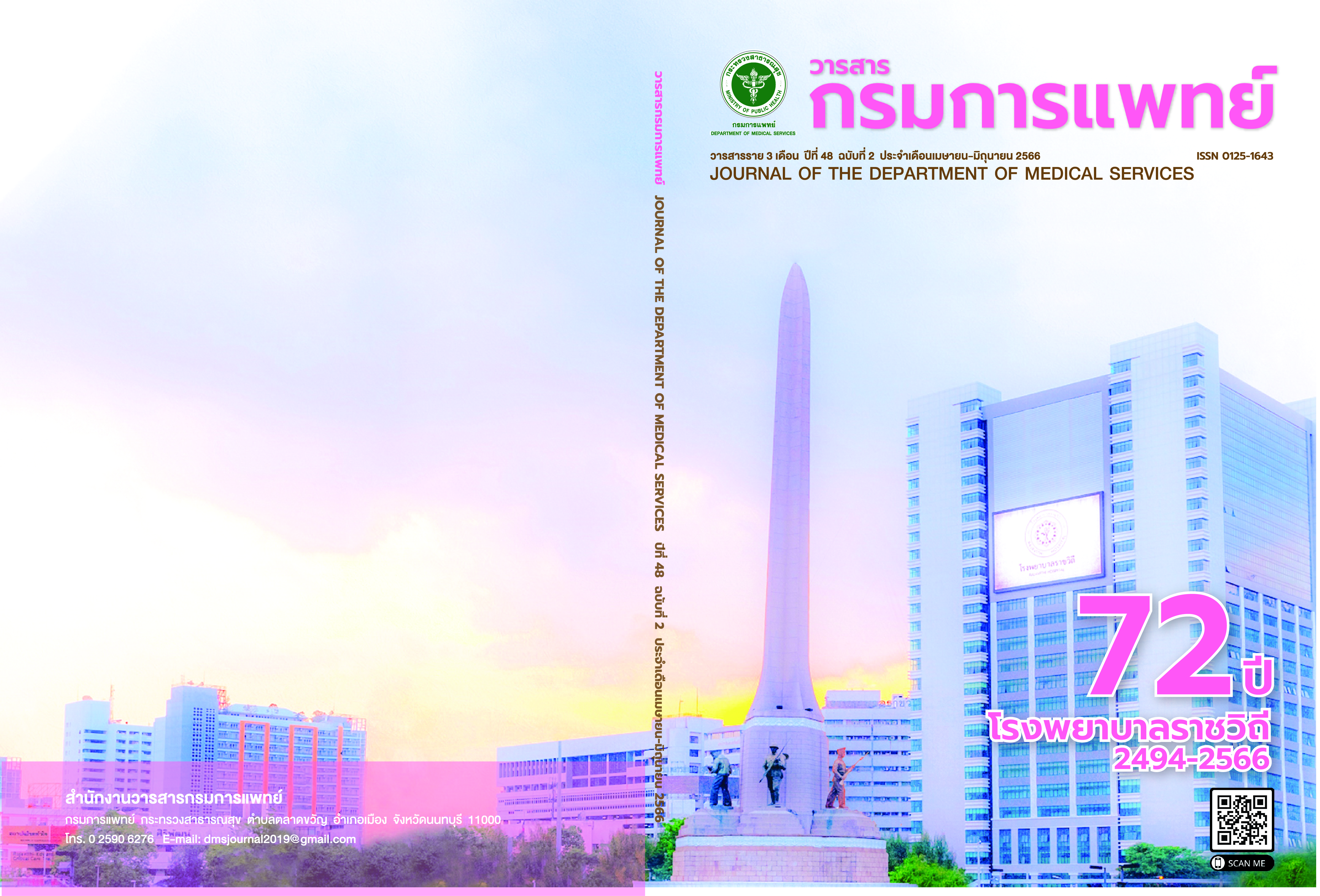Factors Predicting Good Pharmacy Practices of Modern Drugstores in Chachoengsao Province
DOI:
https://doi.org/10.14456/jdms.2023.26Keywords:
Modern drugstore, Good Pharmacy Practices, Factors predictingAbstract
Background: Each modern drugstore must pass a criteria evaluation for Good Pharmacy Practices (GPP) before receiving or renewing a license to sell drugs. Objective: To study combined factors that could explain GPP practices of modern drugstores in Chachoengsao province. Methods: The study was a cross-sectional survey research. Datawere collected from a responsible pharmacist in each of the 120 drugstores. A self-administered questionnaire was developed based on the GPA criteria and passed the validity and reliability assessment was used to collect the data. Data analysis was performed using multiple classification analysis (MCA) statistics. Result: Most of the stores have been open for over 10 years. Most of them were stand-alone stores, and more than half used to attend a seminaron drugstore standards development. The majority of the respondents had a high level of perceived self-efficacy inrelation to the development of drugstore structures, equipment, personnel, drug quality control, and GPP practices. About 63.0 percent (R2 = 0.628) of the GPP evaluation scores variance could be explained by the above 5 self-efficacyfactors plus the three drugstore factors, namely the years that the store was opened, the period in obtaining thelicense, and seminar attendance. The efficacy regarding drugstore equipment was the best predictor, followed by the period in obtaining the license, and self-efficacy to develop the drugstore structures. Conclusion: GPP evaluation outcome could be significantly explained by the 8 factors in the MCA analysis model. Since perceived self-efficacy is one of the best predictors to perform a specific practice, attending the seminar was significantly related to a high GPP evaluation score. Therefore, a seminar regarding the GPP development should be offered for drugstores that have never attended the seminar. A drugstore that successfully performed the GPP should be used as a positive model.
References
WHO. Good pharmacy practice: Joint FIP/WHO guidelines ongood pharmacy practice: standards for quality of pharmacyservices [Internet] [cited 2022 Jun 20]. Available from: https://www.fp.org/fle/1476.
Wimonkittipong S. Panthong M. Guideline to achieve MandatoryGPP Regulation [Internet] 2015. [cited 2021 Dec 20]. Availablefrom: https://www.fda.moph.go.th/sites/drug/GPPPageFile/Operator/ManagementGPP(29Oct2015).pdf
Food and Drug Administration, Medicines Regulation Division.Good Pharmacy Practices : GPP [Internet] 2015. [cited 2021 Dec20]. Available from: https://www.fda.moph.go.th/sites/drug/GPPPageFile/Operator/%20GPP%20Sep%202015.pdf
Green LW, Kreuter MW, Deeds SG, Partridge KB. Health educationplanning: A diagnostic approach. California:Mayfeld; 1980.
Clark NM, Gong M, Kaciroti N. A model of self-regulation forcontrol of chronic disease. Health Educ Behav 2014; 41(5):499-508.
Bandura A. Perceived self-effcacy in cognitive developmentand functioning. Educational Psychologist 1993; 28(2):117-48.
Chariyasirisuk S, Saokaew S. Inspection of Good PharmacyPractice among Modern Drugstores in Kamphaengphet. Thai JPharm Prac 2020; 12(1):173-84.
Wongpatanawut S, Suppaso P. Attitude and practice followingthe notifcation of the Ministry of Public Health on requirementof location, equipment and community pharmacy practices inthe modern drug pharmacy under the Medicine Act 2014 inMukdahan province. FDA Journal 2017; September – December:15 – 27.
Sombatpoothon P, Polnok A. Factors Associated withCompliance with the Good Pharmacy Practice Criteria amongthe Certifed Quality Community Pharmacies in ChonburiProvince, Thailand. Thai Pharm Health Sci J 2022; 17(1):37-45.
Adam MA. Sample size determination in survey research. J. Sci.Res 2020; 26(5):90-97.
Imamee N. Research instrument in statistics and research inhealth management course block. Sukhothai ThammathiratUniversity; 2011.
Andrews FM. Multiple classifcation analysis. Institute for SocialResearch, University of Michigan; 1973.
Andrews FM, Klem L, Davidson TN, O’Malley PM, Rodgers WL.A guide for selecting statistical techniques for analyzing socialscience data. Institute for Social Research, University of Michigan;1981.
Bandura A. Health promotion by social cognitive means. HealthEduc Behav 2004;31(2):143-64.
Downloads
Published
How to Cite
Issue
Section
License
Copyright (c) 2023 Department of Medical Services, Ministry of Public Health

This work is licensed under a Creative Commons Attribution-NonCommercial-NoDerivatives 4.0 International License.
บทความที่ได้รับการตีพิมพ์เป็นลิขสิทธิ์ของกรมการแพทย์ กระทรวงสาธารณสุข
ข้อความและข้อคิดเห็นต่างๆ เป็นของผู้เขียนบทความ ไม่ใช่ความเห็นของกองบรรณาธิการหรือของวารสารกรมการแพทย์



